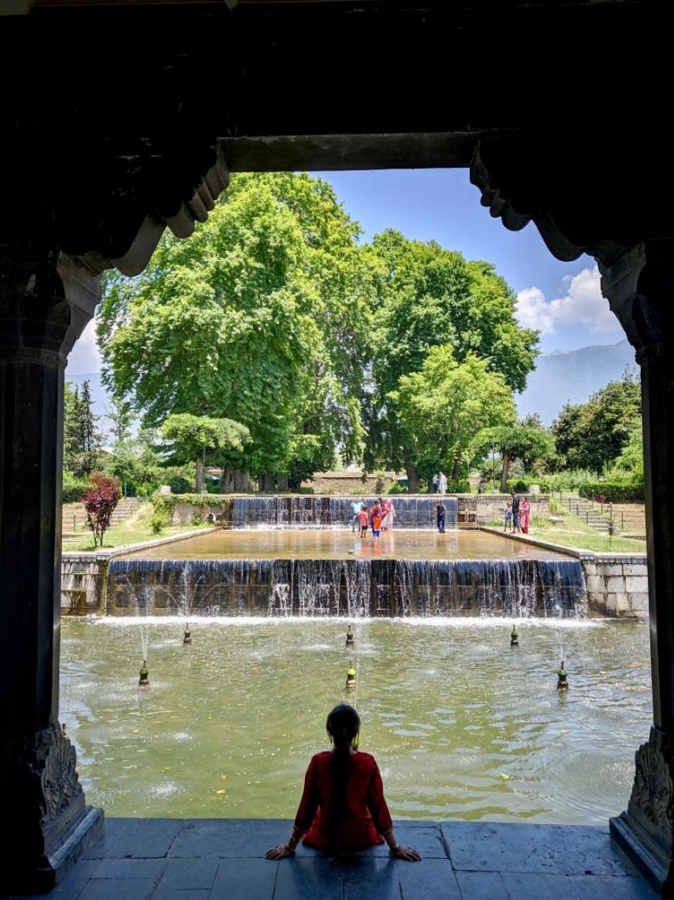
Kheer, Chinar and a Holy Spring
Zyeshtha Ashtami, or Zyeth Atham as called by Kashmiri Pandits (KPs), is observed on the eighth day in the month of Zyeshtha (June-July), and holds special significance for the KP community. The day is dedicated to Goddess Ragnya Bhagwati, also known as Mata Kheer Bhawani.
The deity sits in a temple surrounded by a holy spring. It is believed that the colour of the spring water keeps changing — a clear blue or white colour indicates peace while a murkier or darker shade indicates unrest/violence that is happening or is about to happen.

I visited the Kheer Bhawani temple in Tulla Mulla village on the outskirts of Srinagar with my husband in July 2019. We had timed our visit to coincide with Zyeth Atham. During that time, the colour of the spring was milky white, which we took as a good omen.
On this day, an annual festival is held at the temple. KPs from all over the region visit the temple to pay their obeisance to the Mother Goddess.
The name Kheer Bhawani is derived from the special offering made to the goddess — rice pudding, or kheer — as it is believed to be her favourite. Many devotees also offer milk.
After performing puja and lighting diyas, families usually stay on at the temple premises to soak in the festivities. Tents are erected and food (prasad) is distributed, mainly comprising poori, halwa, kheer and nadru churma (crispy fried lotus stems). While children run about in the temple complex, adults, especially women, sit together under the shade of the chinar and sing devotional songs and dance, partaking in the merriment.
The tall chinar trees, a symbol of Kashmir’s timeless beauty, dot the entire compound of the temple. Together with a sanctum sanctorum surrounded by water and people young and old chanting prayers and pouring in offerings, the spiritual vibes fill the heart and soul with peace and joy. This sense of calm is infused every now and then with the fragrance of incense lingering in the air.

As a non-Kashmiri, I perhaps cannot do justice to the happiness and reverence that KPs feel on this day. But from what my in-laws tell me, it won’t be wrong to compare their excitement to what the Bengalis and Assamese feel during Durga Puja.I was able to relive the festive spirit this year at the Kheer Bhawani havan beautifully organized by the Kashmiri Pandit Association of Europe (KPAE) in Southall, London, on June 3. It was our first time meeting so many fellow KPs in England, and we were touched by the love and warm welcome we received. We attended the havan, offered our prayers, made new friends and relished some delicious halwa-poori followed by lunch. There was entertainment too in the form of music and a quiz on Koshur culture. It was really nice to see many young KPs who were so involved in the programme and were keen to keep their roots alive.
It’s true that the KPs have faced grave injustice in the past, but they have used their history —and education — to build a better future for themselves. Today, the KP diaspora is spread across the globe, including the UK, and they are shining bright as a community.
May Mata Kheer Bhawani continue to bless her children and give us strength to lead each other on the right path.


